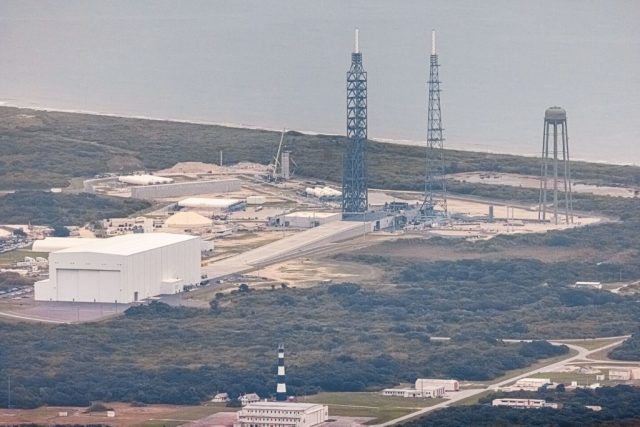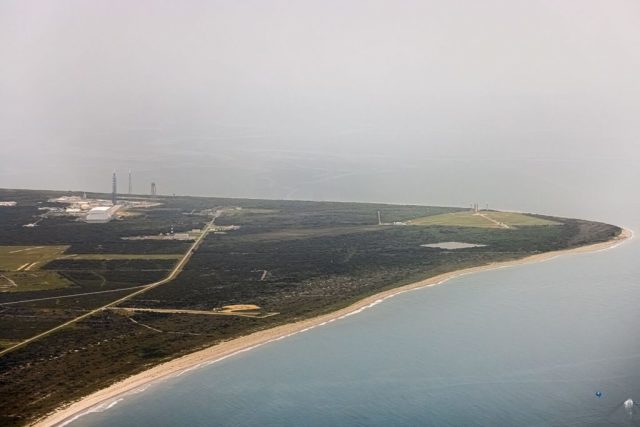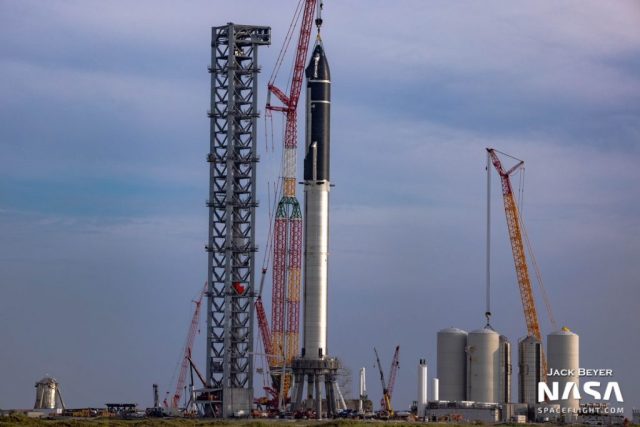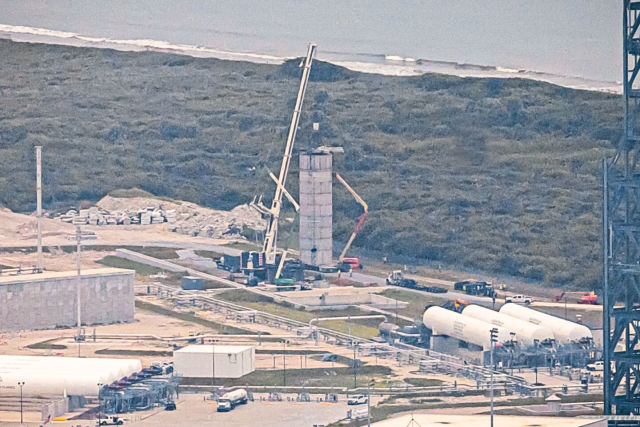The first photos of the prototype tank of the upper stage of the promising New Glenn rocket from Blue Origin were posted on the Network. It is assumed that the heavy carrier will allow Jeff Bezos ' company to compete with SpaceX.
Blue Origin has shown the upper stage tank of the promising New Glenn carrier, which, according to new plans, will become a conditional analogue of the Starship system being created by SpaceX.
According to Ars Technica, yesterday Blue Origin transported the first stainless steel test tank to the LC-36 launch complex of the Cape Canaveral base (Florida).

LC-36
Image source: arstechnica
This tank is part of the efforts of Jeff Bezos ' company, codenamed Project Jarvis. It aims to develop a fully reusable upper stage for the New Glenn rocket. According to the data provided, the tank will soon begin strength tests.

LC-36
Image source: arstechnica
Blue Origin's goal is to reduce the overall launch price of New Glenn. It is necessary to make the rocket completely reusable so that Blue Origin can successfully compete with the above-mentioned SpaceX.
The latter is closer than ever to the orbital tests of its fully reusable Starship system, consisting of an accelerator and a spacecraft. Recently, Musk's company installed the Starship SN20 ship on the Super Heavy Booster 4 accelerator , thus creating the largest rocket in history.

Starship
Image source: SpaceX
Prior to this, SpaceX conducted a number of successful tests of Starship technology demonstrators. The most significant event took place on May 5, when the prototype Starship SN15 was able not only to successfully reach about a ten-kilometer height, but also to successfully land.
The New Glenn rocket was originally an almost complete analogue of the famous Falcon 9. It was supposed to get a reusable first stage, which would land vertically after launch (similar to how it happens with the brainchild of SpaceX). The new plans significantly expand the potential of the carrier.
New Glenn will be seven meters in diameter. The rocket received two stages (earlier we talked about the possibility of installing an additional third). The carrier will be able to carry up to 45 tons of cargo into a low reference orbit. If there are no serious obstacles, the rocket will make its first flight in 2022.
The development of launch vehicles is not the only area where SpaceX and Blue Origin compete with each other. So, [...] the story of the development of the lunar lander for the NASA Artemis program has recently received a new round of development [...] . In this case, the Blue Origin module acts as a competitor to Starship HLS.

